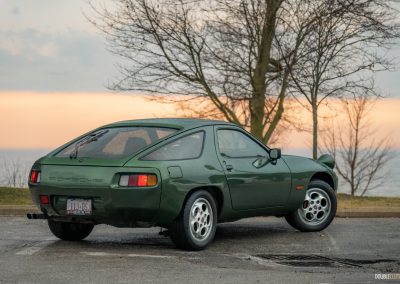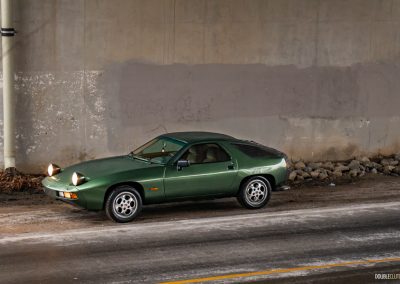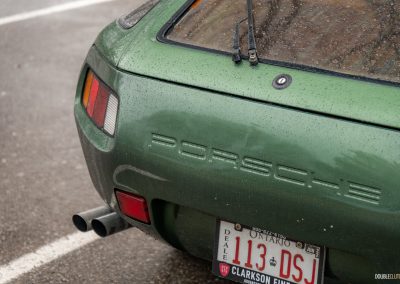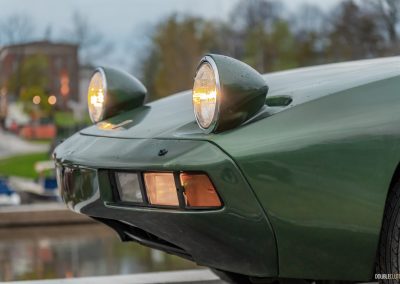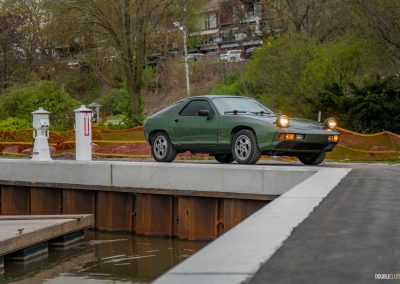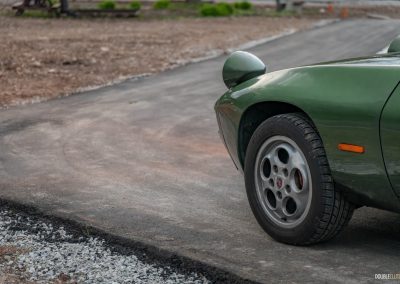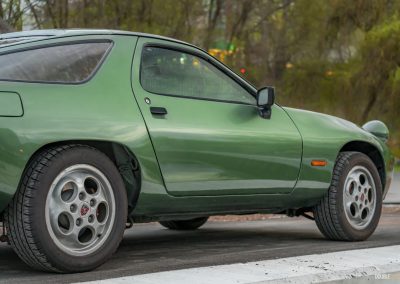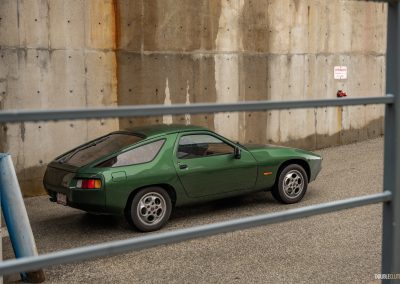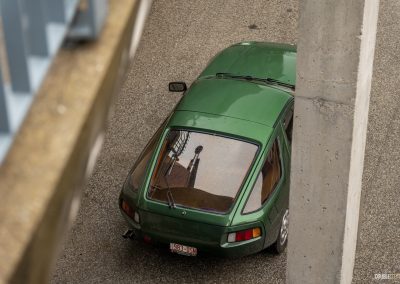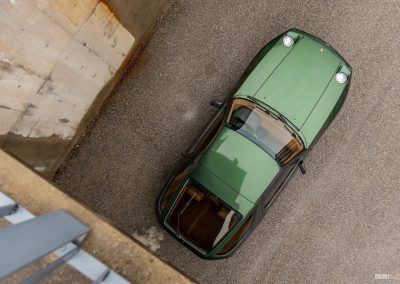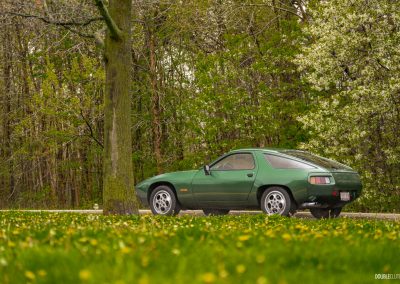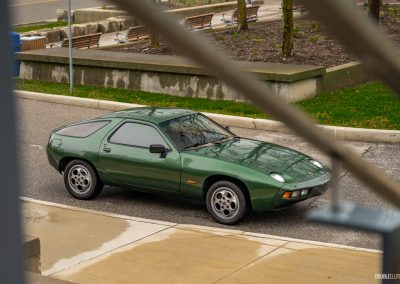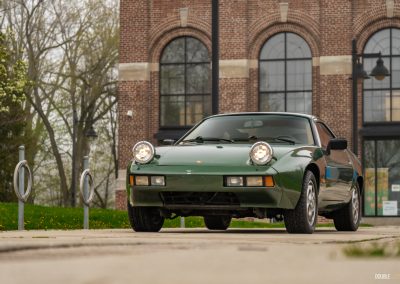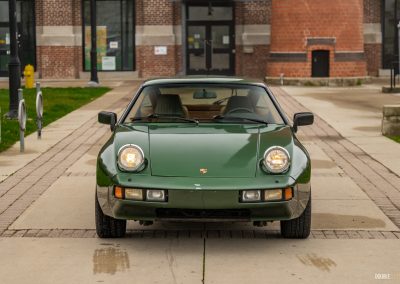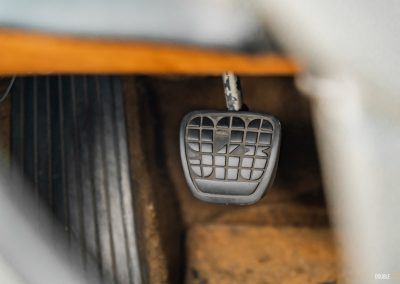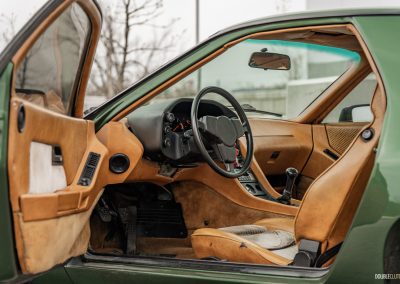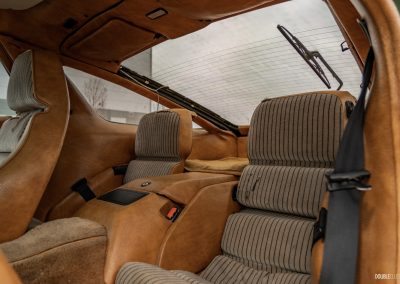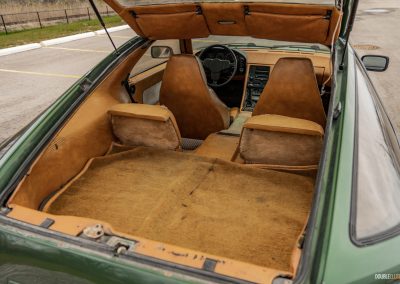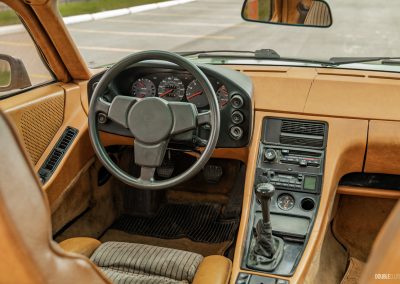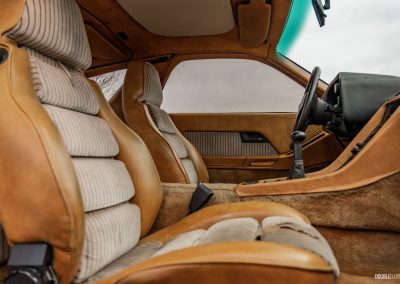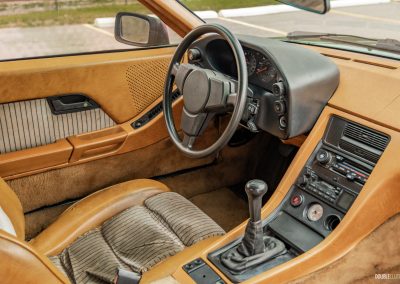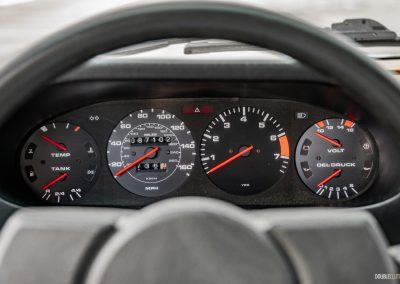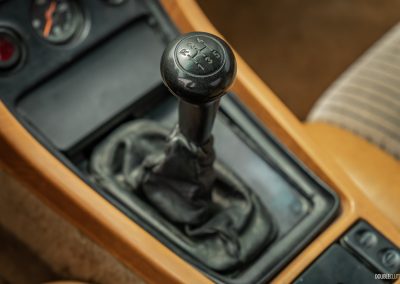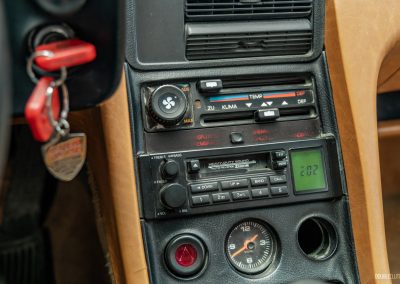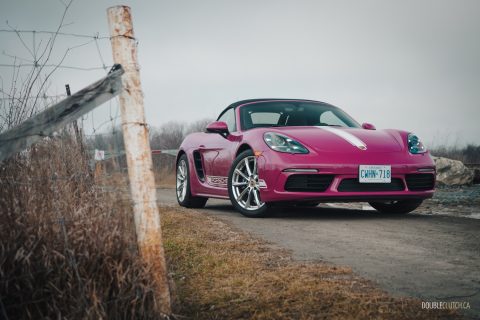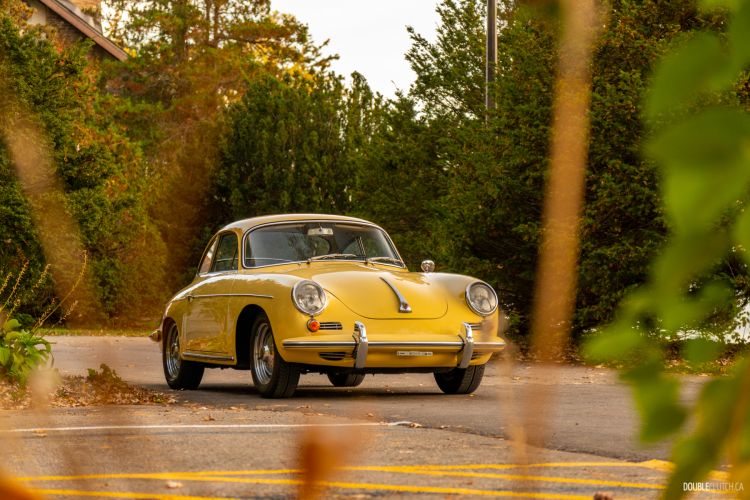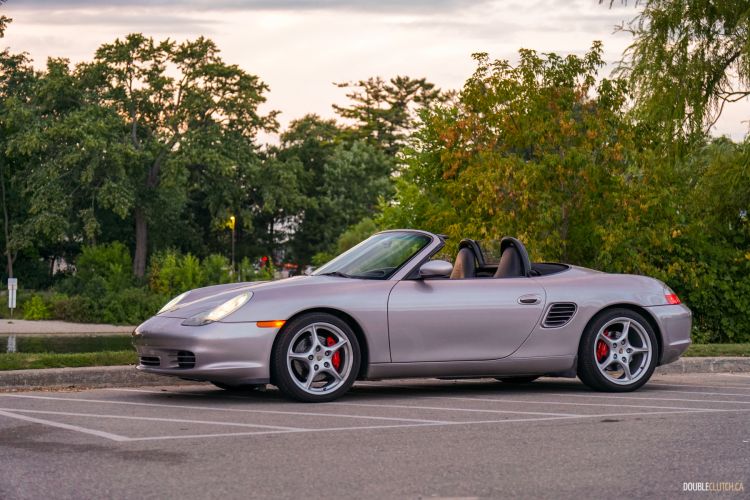Porsche’s history is filled with seminal cars that aren’t the fabled 911. I’ve already told you about how the Boxster saved the brand, and how the 356 started it all. Now, grab a drink and get comfortable, because it’s time to look at this 1978 Porsche 928. It’s the most divisive car in their history, a fascinating experiment — and a car that a lot of Porschephiles would prefer to forget about.
The Sopranos, House, Barry, Mad Men, and — to an arguable extent — Breaking Bad are all fantastic shows that share a specific, relatable theme that makes them so enthralling. At their core, they’re all about a complicated, tragically flawed man trying to change … and it typically ends in tragedy for them. [Or a cut to black. —Ed.] We relate to these characters because we’re all flawed, working on ourselves, and beset with setbacks on the way. It doesn’t always feel like it’s getting anywhere, as if our flawed trajectory is inevitable, like the world won’t let us change no matter how hard we try.

The 928 is the storied Stuttgart firm’s ambitious attempt to be different, both from everyone else and their own past. But before we get into the 928, we need some context, so I’m going to make this about the Porsche 911 for a minute. That car isn’t just a big part of their identity; it is their identity. I don’t think there’s another car company whose identity is more tied to a single car than Porsche is to the 911, and that’s not a bad thing. The 911 is arguably the most iconic sports car, it has been in production since Porsche’s youth, and is famously the most winning race car in history. If the Beetle-based 356 put Porsche on the map, the 911 redrew it. But as great as it was — and still is — the 911 was fatally flawed.
The very first 911 was designed with its air-cooled Boxer engine hung out over the rear wheels, just like the 356 and Beetle, because that’s what Ferry Porsche knew. But unlike the 356 and 911, the Beetle didn’t do this because it had any pretensions about being a sports car: it was designed that way by Ferry’s father, Ferdinand Porsche, because it was economical. It was a clever packaging solution that was mechanically simple, and cheap to manufacture, that’s it. Ferry carried those fundamentals forward with the 911, where it yielded some very unique benefits that helped make it incredibly successful in racing. It had incredible rear-end traction from the weight over its back tires. It was also lightweight, and that clever packaging and simplicity made the 911 reliable. You can’t win races if you don’t finish them, and it’s a lot easier to win races if your car is lighter than everything else around it.

But that oddball layout was a double-edged sword; the 911 was infamously difficult to drive quickly, and developed a bit of a nasty reputation as being a scary car, even if its compact dimensions and light weight made it appear approachable. As Newton’s law goes, an object in motion stays in motion, and an object at rest stays at rest. Here, that dubious object was the 911’s rear-mounted engine — if you came into a corner too hot, that engine didn’t want to move on turn-in and the car would understeer straight off the road. The only way to overcome this was to slow down a little more than normal and almost throw the rear end to get that object in motion, rotating through the corner. This demands a huge amount of skill — not to mention testicular fortitude — to catch and contain this motion without staying in motion for too long and oversteering backwards off the road. Driving a 911 quickly was a dicey proposition that demanded a talented operator.
Moreover, the Boxer engine’s layout, instead of a more conventional inline or a “V” layout made it highly prone to oil leaks, and the finned design that helped facilitate air passing over it for cooling purposes made it relatively large for its limited displacement. Those fins reverberated like a tuning fork and made the 911 loud, which was somewhat unbecoming for a growing upper-crust car company. Moreover, the engine being in the back made the 911 a quirky car with quirky issues especially among those who wanted to use it as a normal car; controlling temperatures in daily driving situations was tricky, generating reliable heating in winter was difficult, and the wide range of operating temps eventually meant emissions regulations was going to be a serious problems. Porsche was concerned the 911 was getting near the limits of what its layout was capable of performance-wise.
Not having a real trunk was a major bummer, too. And so the 928 was born from a radical idea: what if it didn’t have to be this way?
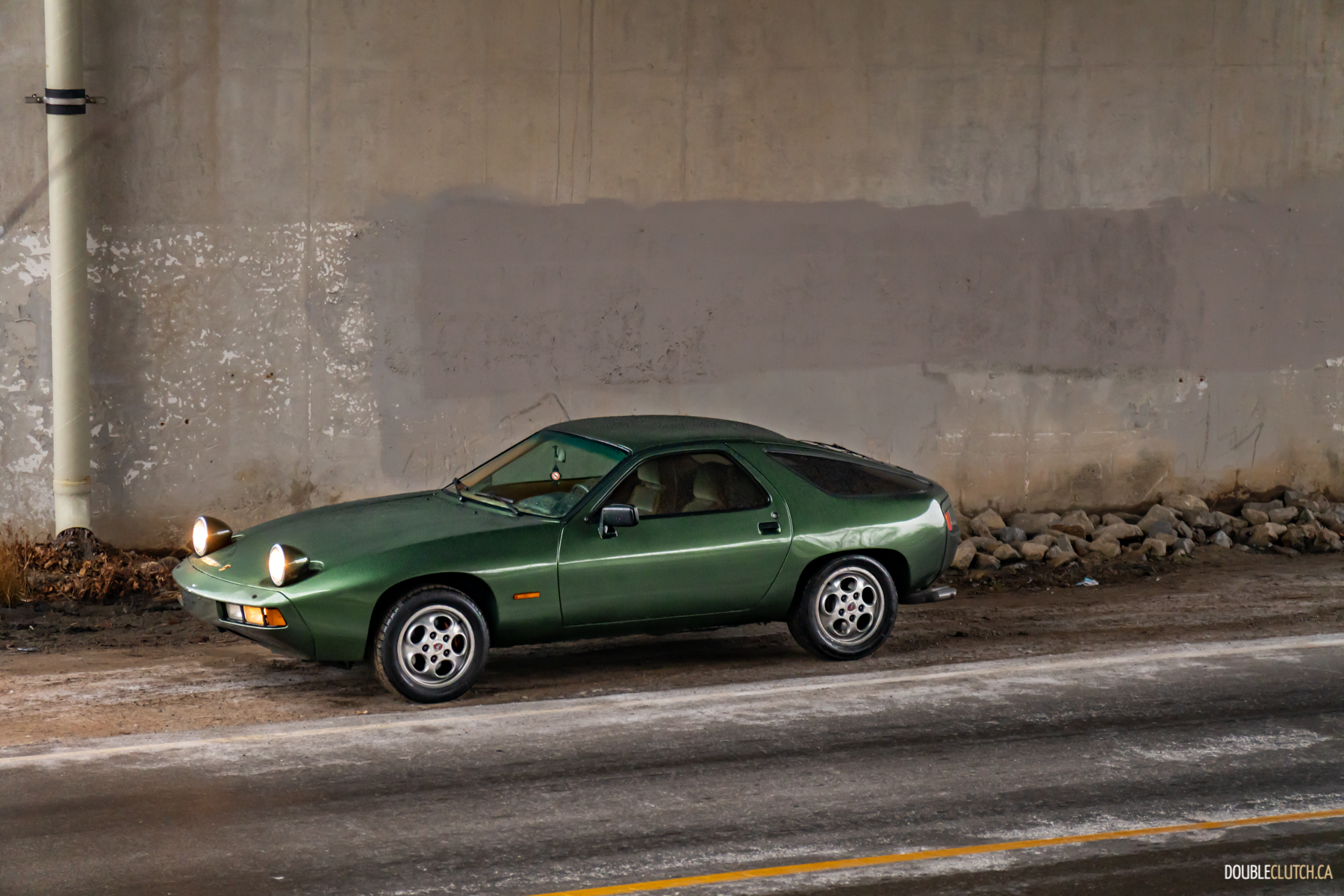
Porsche was on top of the world, having just developed the 917, the first of many prototype race cars that dominated the 24 Hours of Le Mans and everything else it touched. Who was to say they couldn’t start fresh and do the whole car thing without being beholden to the bones and banes of a decades-old economy car? What if they could free themselves from the self-imposed shackles and change?
Porsche began developing the 928 in 1971, aiming for world-class performance and luxurious amenities in a package that was easy to drive and live with. It was Porsche’s first ever entirely new vehicle design, using the best technology and engineering available at the time to produce the finest car on earth. The 928 was to be everything for everyone … if you had deep pockets.
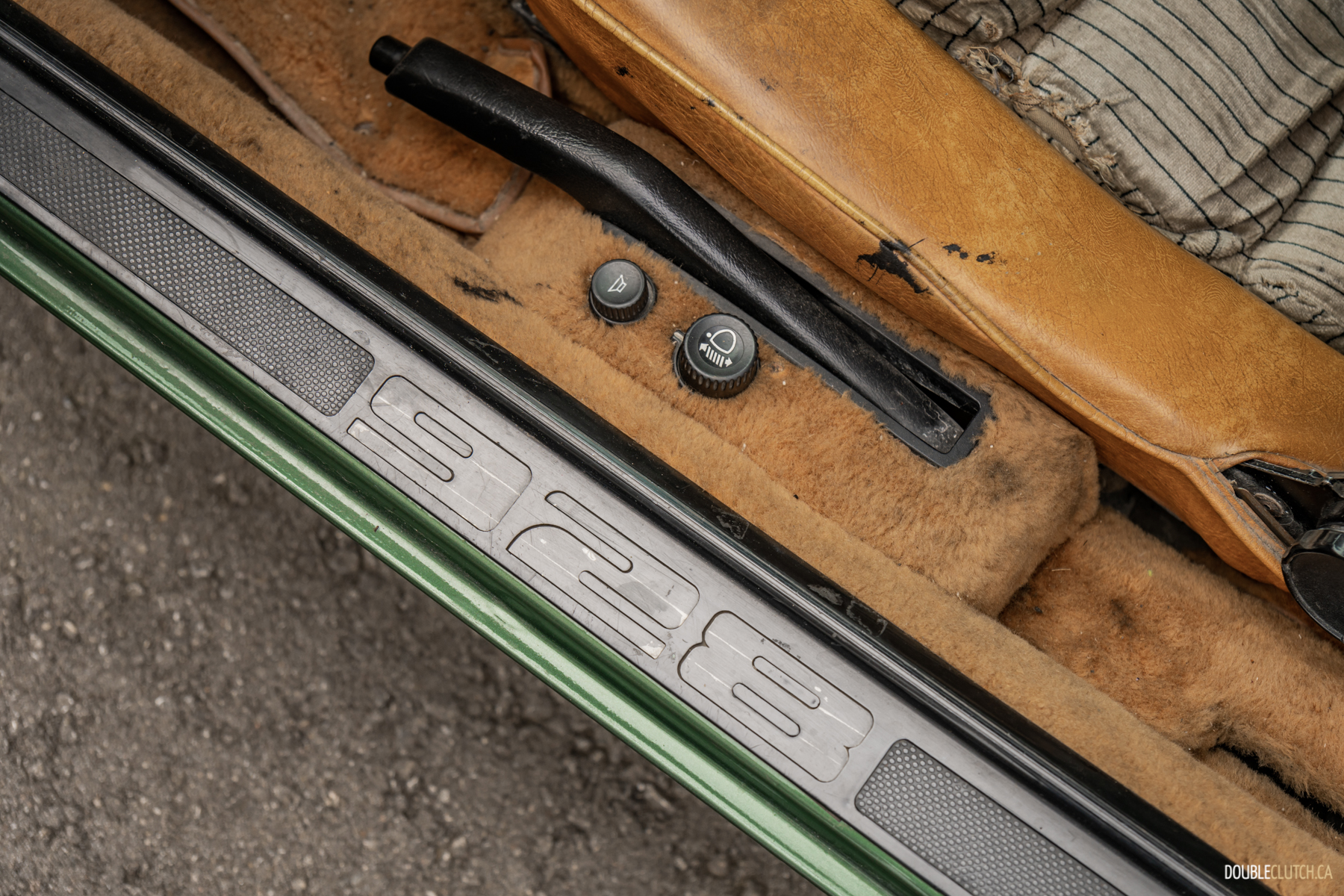
It was an extremely ambitious project for Porsche, still relatively young and a fairly small player in the car world, known only for niche sports cars and annoyingly excellent race cars. Having to retool for a new car is one thing, but they were also developing a new engine with an entirely different architecture, on a new chassis, with a new transmission. They were trying to be best at everything, so every single one of these new developments came with new innovations, many of which world-firsts in a production car.
The 928’s new engine was a marvel on its own. Anything resembling an air-cooled flat-six was never considered. The team instead settled on a water-cooled 4.5-litre V8 with overhead cams, mechanical fuel injection, and all-aluminum construction without the use of heavy steel bore liners. The only other mass-produced European car with a bigger V8 at the time was Mercedes, but even then, they weren’t as powerful. It was tough under extreme conditions, smooth in operation, relatively light, reasonably efficient, and of course, really fast.
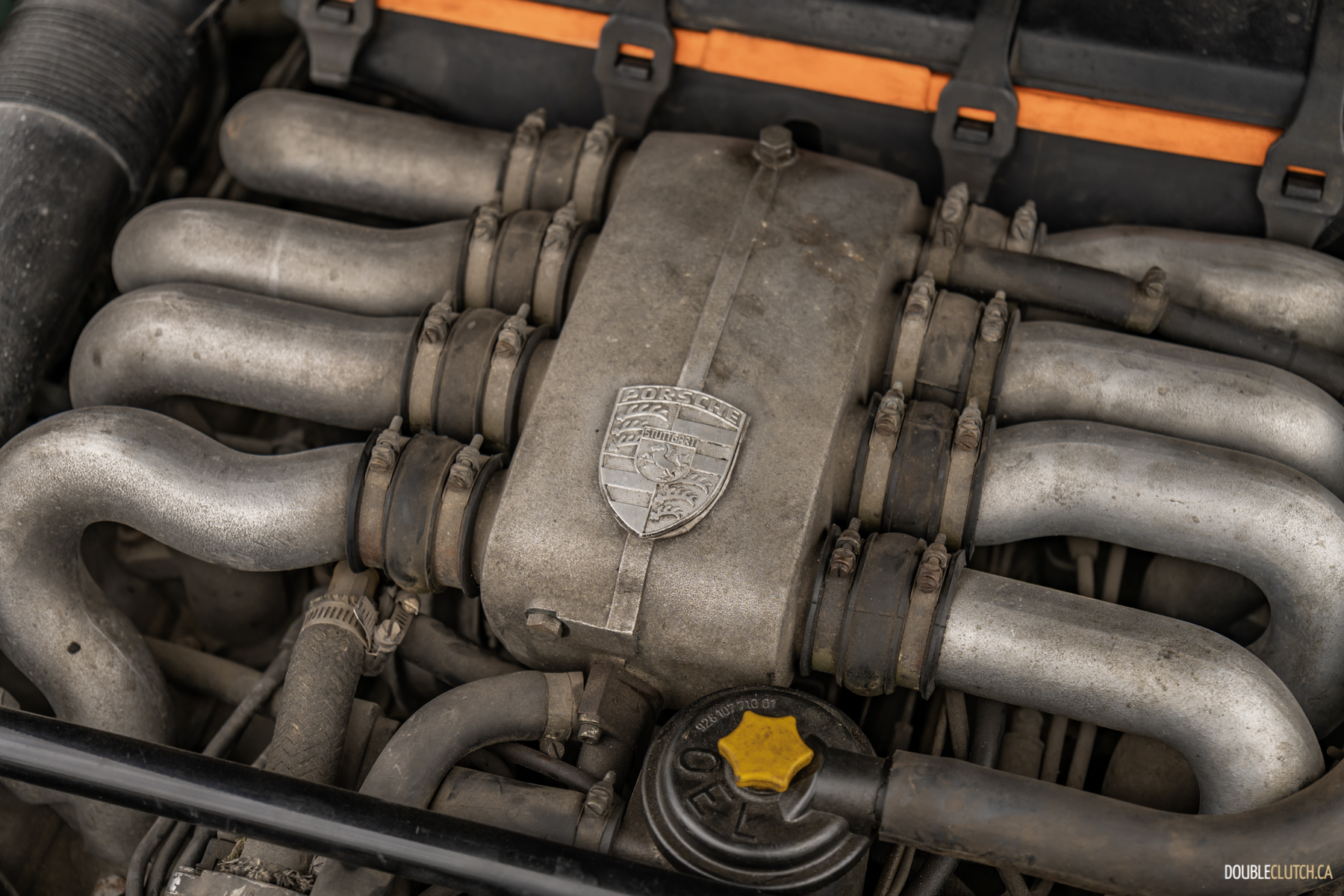
The first 928s — like the one here, with its 240 horsepower engine and five-speed manual transmission — can sprint from zero to 100 km/h in just under seven seconds and top out at 230 km/h, handily among the fastest cars on Earth at the time. But back then, fast cars were pretty much single-purpose machines, often putting performance at the expense of practicality and comfort. Porsche strove to ensure the 928 made no such compromise; it could blow the doors off a V8 Ferrari while being as easy to live with as a V8 Mercedes.
The engine was mounted far back in the chassis, tucked up against the firewall at the very back of its long, low hood, just like modern sports cars. This helped achieve perfect 50/50 weight distribution that had never been possible before. To further improve this, the transmission was mounted at the back of the car, a novel transaxle design that had previously only been seen on a handful of exotics. This has also become common in modern high-end sports cars.
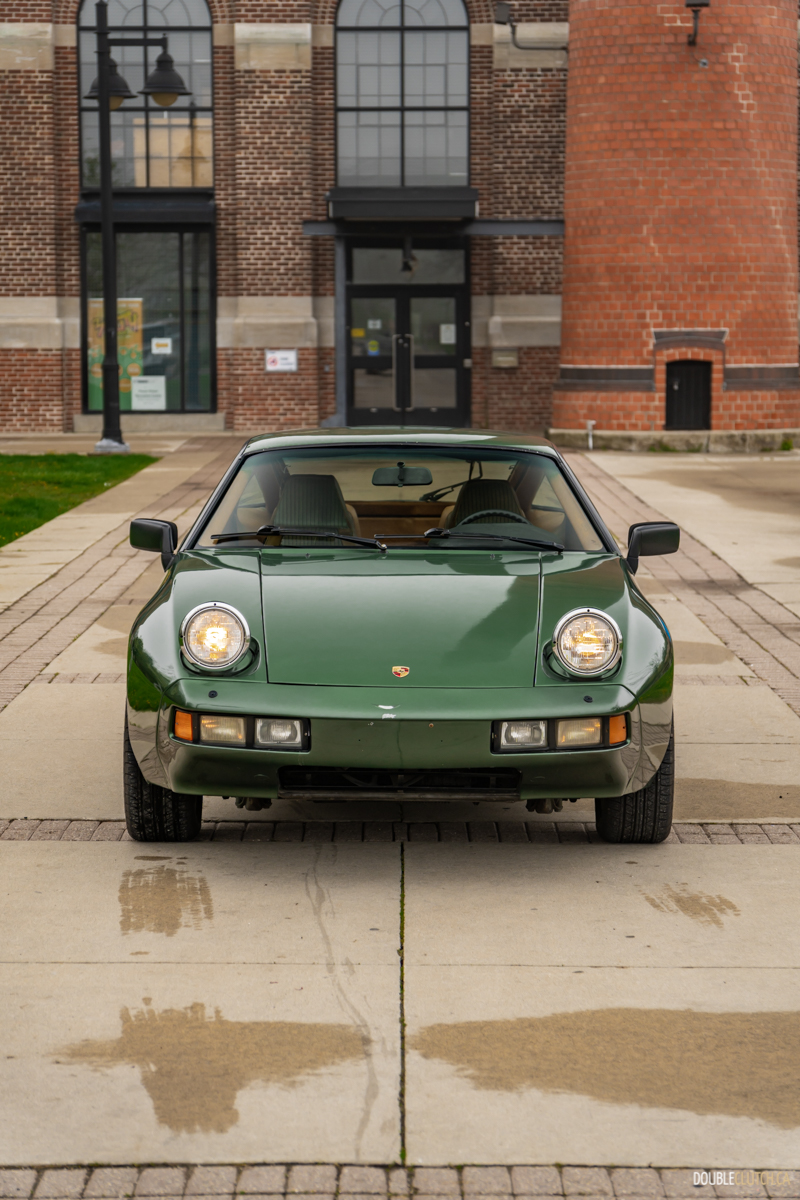
The rear suspension benefited from a new design called the Weissach Axle, touted as something of a passive four wheel steering system. It cancelled out the dynamic toe gain under cornering that was inherent to its semi-trailing arm layout, thus making the car far more stable when entering corners — a huge boon on top of the 928’s already fantastic balance that made it a peach to drive fast.
Even the bodywork was novel. The 928 was the first production to employ an ultra-clean “bumperless” design, with a separate, flexible plastic bumper skin over a reinforced polyurethane structure behind it — you know, like every modern car now. This was quite an innovation unto itself, but Porsche then had to further innovate by developing a new blend of paint that could flex on these semi-soft “bumpers” and present exactly the same on the car’s steel and aluminum body panels, too.
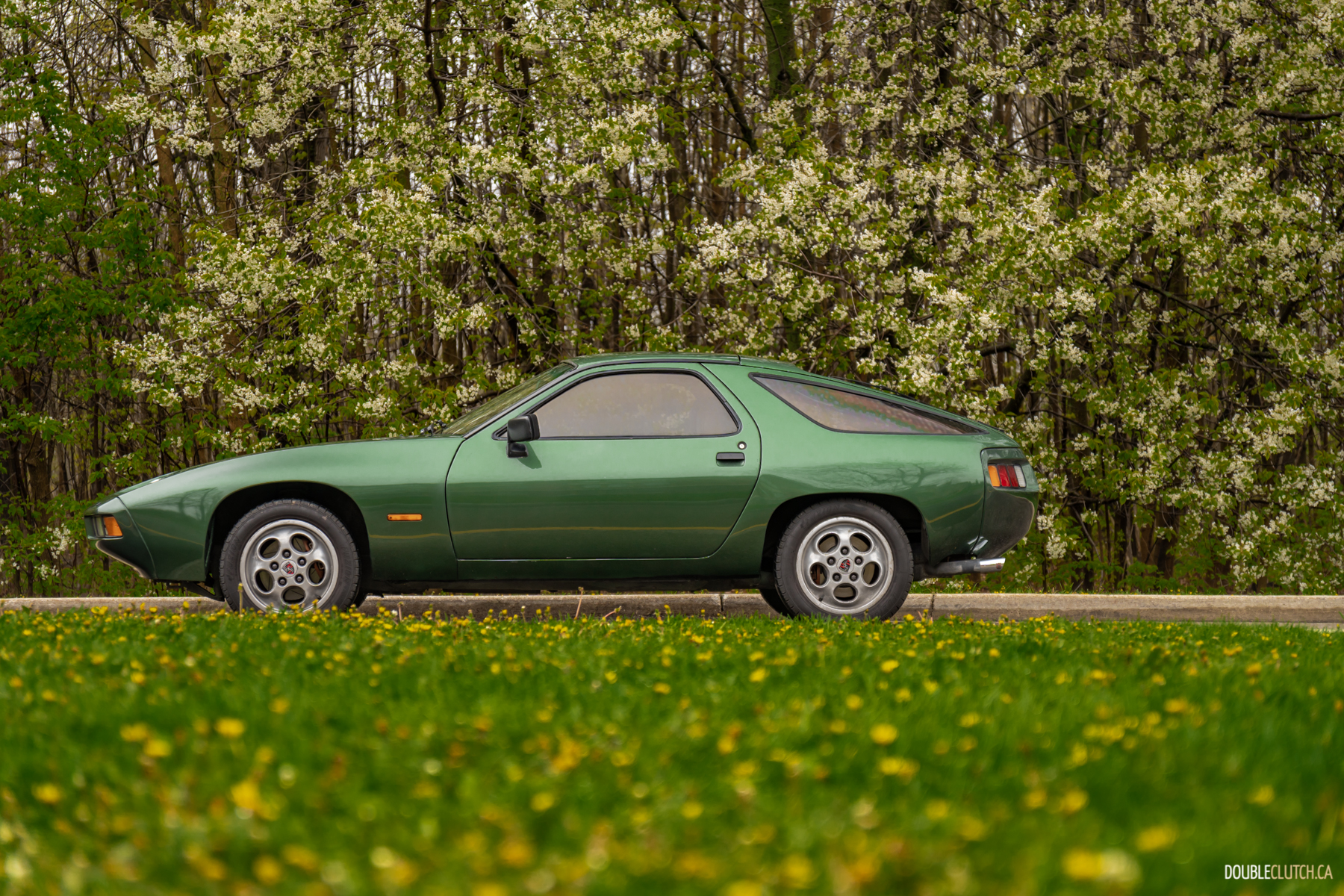
The 928 is a strange car to behold; I love its wild, uncannily slick shape that has laid the groundwork for so many sports cars since. I can’t imagine how it was seen on the road in 1978. There was nothing else even remotely like it; an oddly clean hatchback fishbowl with a thundering V8. A friend of mine who has (and loves) his 1979 Porsche 911 remarked that he couldn’t imagine who would walk into a Porsche dealership, drive both cars back to back, and not pick the 928, even if it looked like an alien on the showroom floor. This spaceship of a car was the future.
Usually when I do these pieces, I try to track down a pretty pristine example. This particular 928 — an early, first-year, German-market car that spent the first part of life storming the Autobahn near Stuttgart — is not exactly a pristine car. It’s been through it, it wears its years proudly, and it still looks and feels so much more modern than its age suggests. It doesn’t feel like it’s from the same planet as a 911.
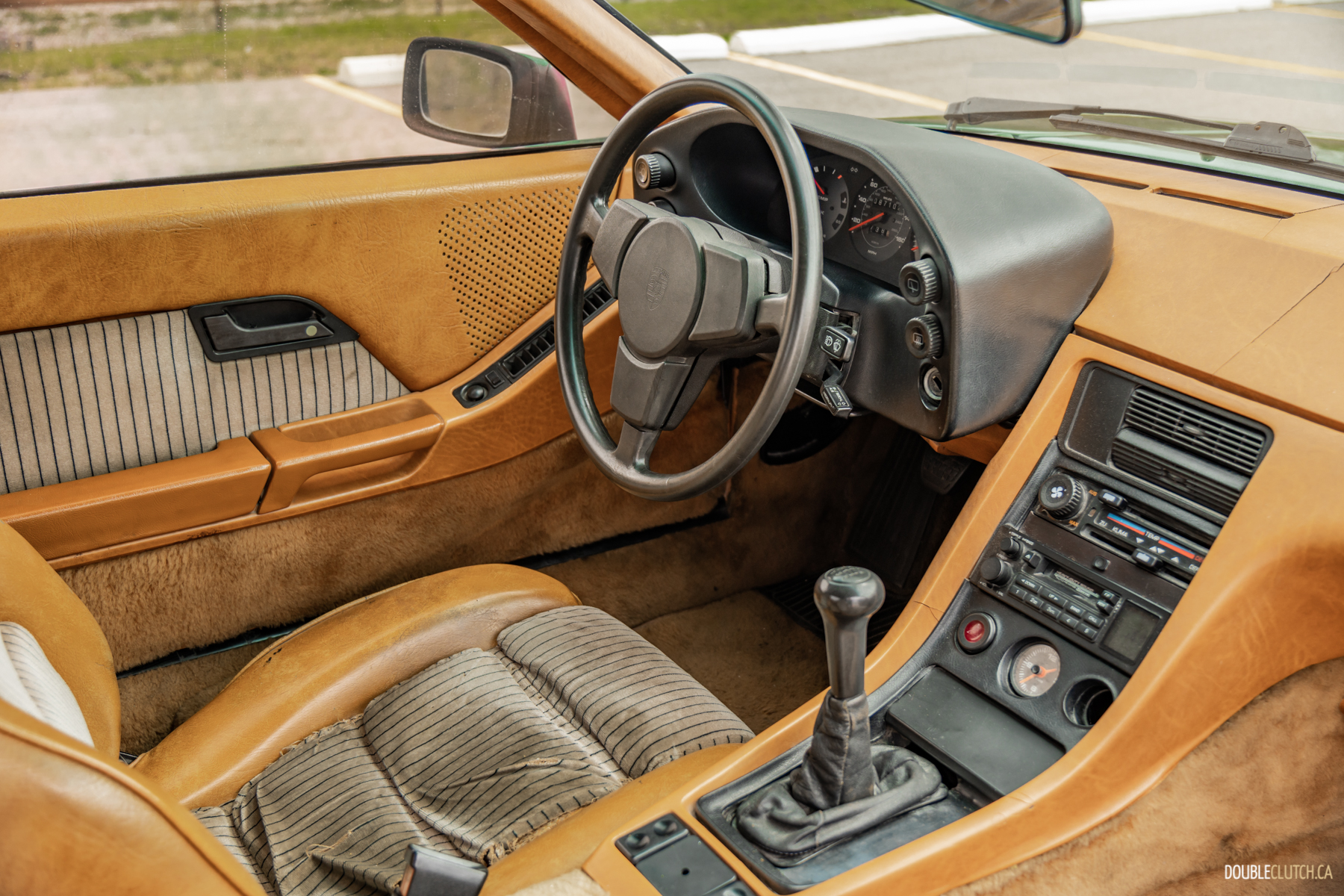
Were it not for its 1970s-chic shag carpeting and marbled brown vinyl, the 928’s cabin could almost pass for modern. The large, distinctly cut door slams with a solid thud, and the semi-symmetrical dashboard leads to a sloping centre console, not unlike a modern Porsche. The seats are terrific, the gauge cluster tilts with the steering wheel, and the driving position is more laid-back than the very upright 911. Visibility through the fishbowl windows is terrific, with the steeply raked windshield acting as a marked departure from the 911’s visor. Looking around behind you reveals a pair of small but usable seats, complete with their own sun visors mounted to the top of the hatch, and can fold down to extend the already expansive cargo area. The pedals aren’t floor-hinged like a 911 yet are perfectly spaced for trick footwork, and the tallish shifter falls naturally to hand, close to the steering wheel.
Twisting the key in the ignition — mounted mounted to the right of the steering wheel, like, you know, a normal car — fires the hulking V8 to life almost instantly … usually. Sometimes it cranks for a long time before angrily waking up, but it always wakes up with a heaving mechanical grunt. It settles into a thumping, bassy idle quickly; this is a crisp pilsner ready to crush right now. It doesn’t need to breathe for 15 minutes like a fine wine, or the other exotics of its day. Slide the dogleg shifter down into first, let out the clutch, and you’re off.
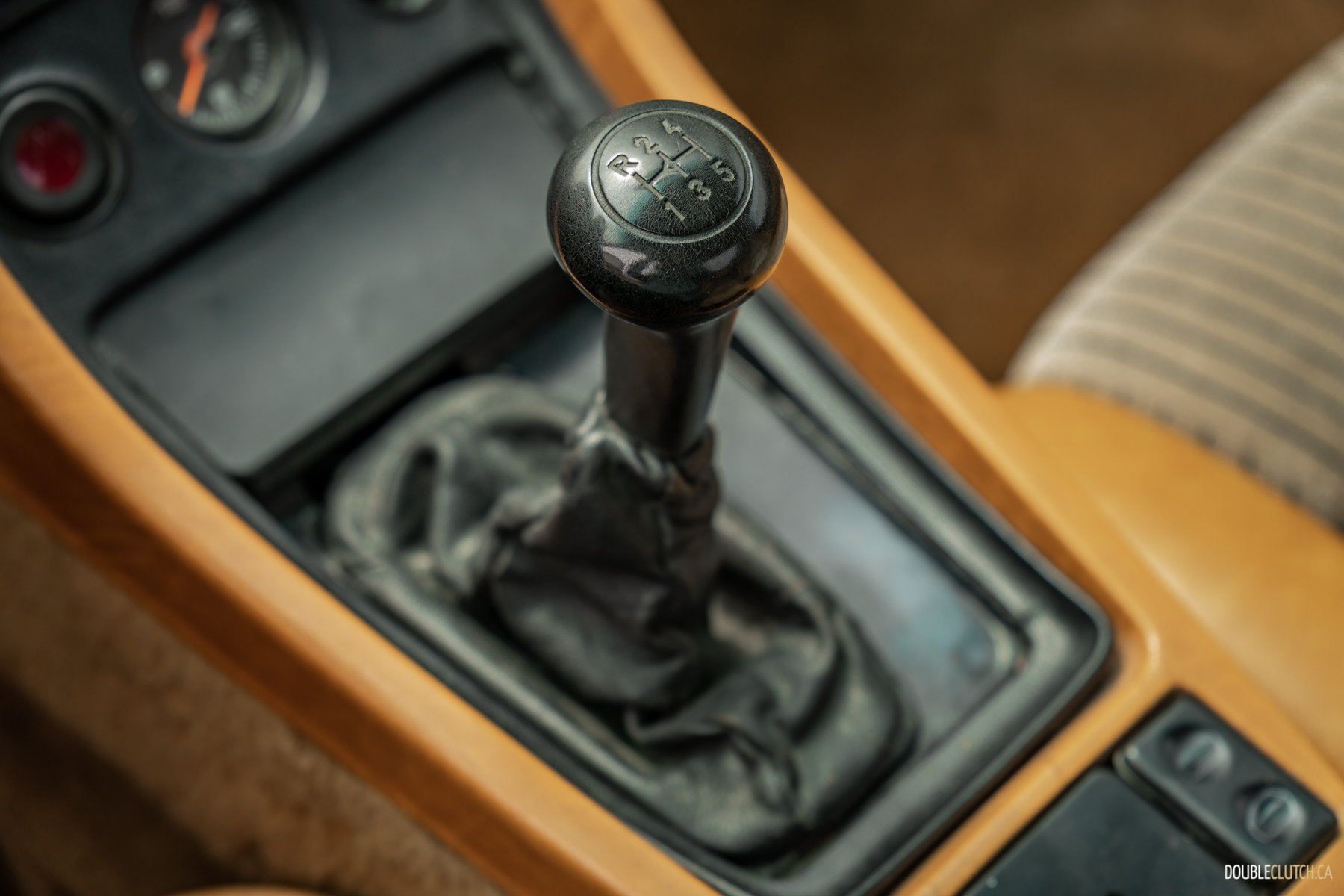
The first thing that strikes you is how much torque this engine has, accentuated by its close-ratio transmission. It’s not a brute like an American V8, but rather seems to have an endless reserve of effortless muscle on hand. The 928 is never in the wrong gear, equally happy to toddle along just above idle or roar up to its redline. It doesn’t have a torque curve in the traditional sense; the 928 just kind of on all the time, building power like an unexpectedly urgent diesel that likes to sing, and it doesn’t run out of breath.
It’s good that the engine is so flexible, as shifting gears in the 928 is a bit of work. The shifter, especially in this very early car with its unique synchronizer design that was eventually abandoned, is simultaneously notchy and vague in its stiff, deliberate action. As is the long throw clutch pedal; sure, it’s communicative, but learning what kind of rhythm this old lady is looking for requires an abundance of mechanical sympathy. Even then, it doesn’t really feel natural. It’s not hard to see why nearly 90 per cent of these cars were shipped with a Mercedes-sourced automatic transmission.
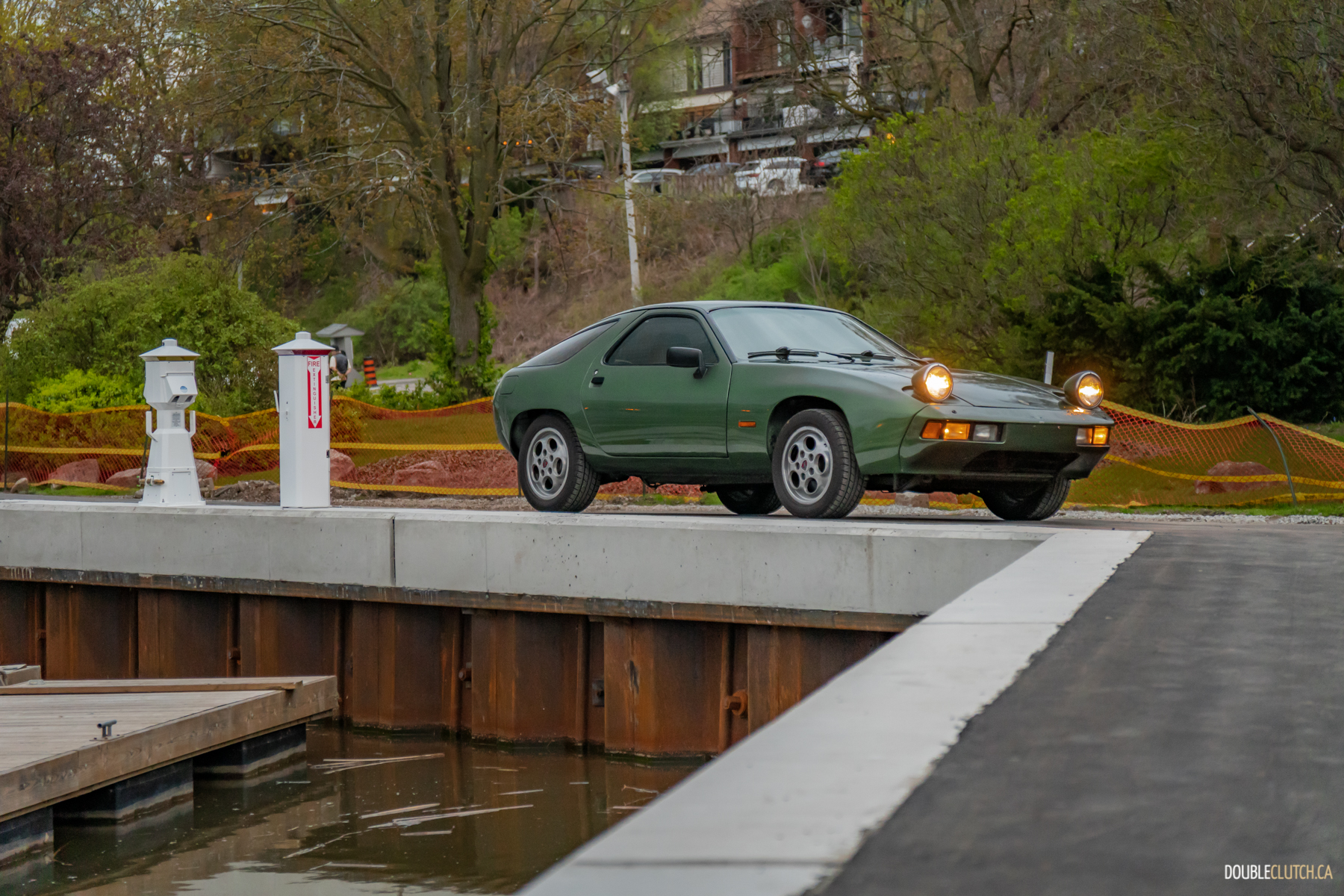
But if you can get into a rhythm, you’ll quickly learn that Porsche absolutely succeeded at their mission of delivering a phenomenal driver’s car — although I see why it struggled to find acceptance in its day. It’s almost the exact opposite of a 911; the steering in particular is heavy and a touch slow, but very precise. It fosters a very deliberate action, allowing you to place the nose with utmost confidence. Setting up the 928 for a fast corner isn’t an exercise in bravery. It’s impeccably balanced and blessed with an abundance of mechanical grip from its clever suspension design.
Unlike quite literally everything else of this vintage, the 928 feels as though it can’t be overwhelmed. It embodies the old cliche of “drives like its on rails,” seemingly impervious to adverse conditions or improper piloting. It stays flat no matter what, the front end bites into the pavement dutifully, and the rear end refuses to give up, telegraphing any fatigue well ahead of time. It was a welcome first for a Porsche road car. It was a very powerful car for in its day yet still feels underpowered, like the chassis could handle so much more without breaking a sweat. They did indeed get a lot more powerful in short order, with the 928 S debuting just two years later.

This must have felt to people in the 1970s like the Nissan GT-R did in 2008. The 928 is manically fast, but too easy because it’s doing all the work for the driver. It was heralded as a supercar, and arguably was the very car to coin the term, but its flat powerband, conventional ergonomics, luxurious accommodations, heavy driver actions meant that the 928 was perhaps, in the eyes of Porsche fans … not a real Porsche.
A Porsche was light, ethereal, and difficult; notoriously tricky to master but oh so rewarding if you had the testicular fortitude for it. The 928 was the opposite; comfortable, conventional, and callous — even if it was quick. Porsche wanted to build their version of a Mercedes, a safe and approachable car that’s excellent at everything. By all accounts, they succeeded. The 928 even won the prestigious European Car of the Year award in 1978, and to date, it’s still the only sports car to have done so. It was a phenomenal car and a triumph of engineering, but it was too different, too far ahead of its time, and most crucially, too far removed from what people expected of a Porsche. Whereas their race cars could validate themselves in competitive racing, the 928 had to compete with the hearts and minds of a fickle buying public. It was supposed to eventually replace the outmoded 911, and by every measure, it should have, but the world rejected it.
Like a recovering alcoholic showing up at an old watering hole, it wasn’t welcomed. Who are you, and what have you done with Porsche?
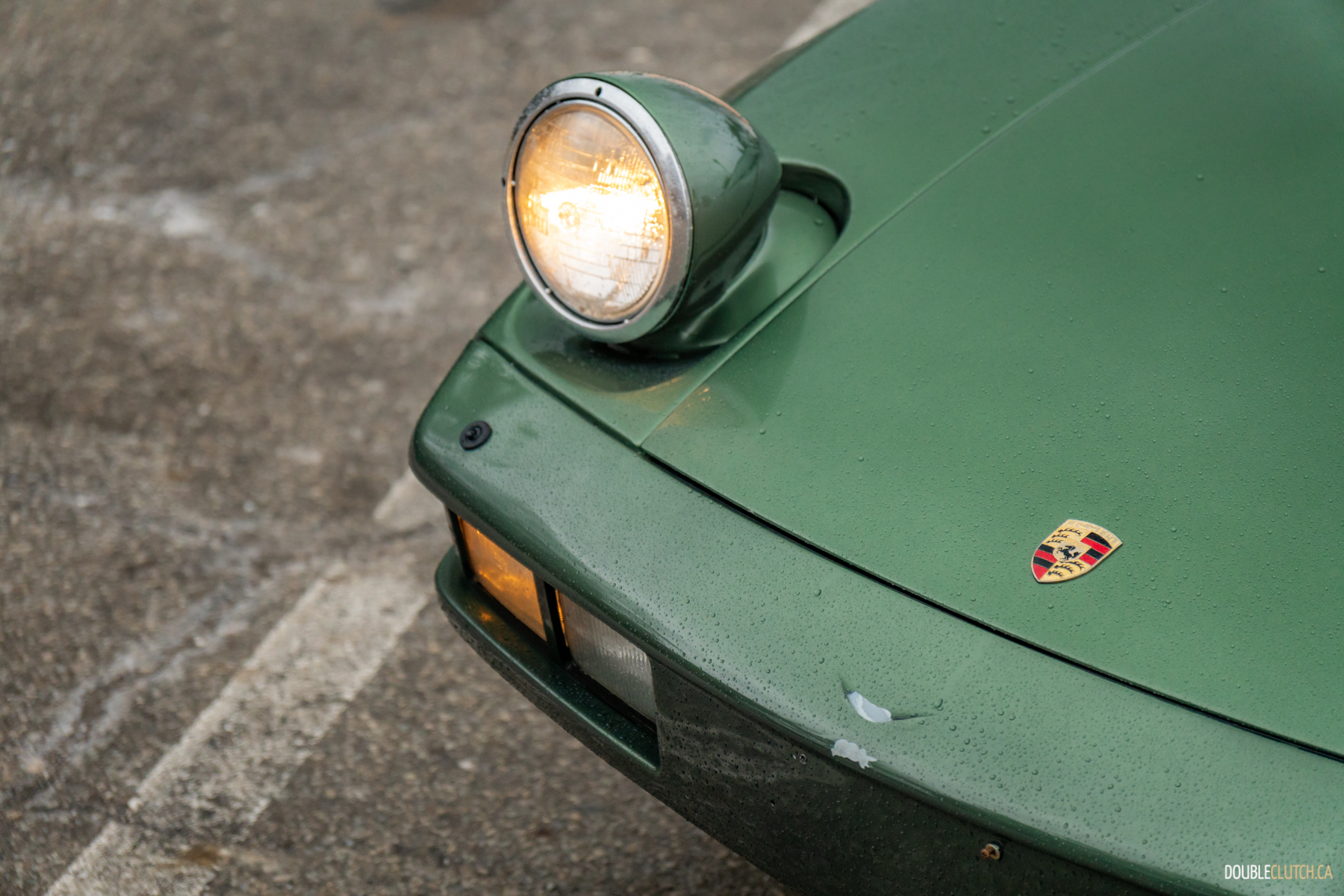
The 928 was supposed to be the turning point. It was a real, concerted, and hugely expensive effort for Porsche to turn everything around and reinvent themselves. Porsche didn’t want to make spooky bass-ackwards sports cars with bewildering ergonomics. They wanted to free themselves from what they were known for, and apply their bottomless well of talent to a blank canvas, one that would become the finest fast car in the world.
The 928 was discontinued in 1995. It was a near two-decade run of continuous improvement, of being the absolute best they could possibly be, but sales were never really strong. It shared almost no components with anything else Porsche made, and it was hideously expensive to keep going. They tried. They really did. But just like Gregory House, Tony Soprano, and Barry Berkman, they couldn’t make the change stick. The world didn’t want the 928 because it wasn’t the Porsche they knew, and there was significant resistance from within Porsche because change is hard and they knew it would end this way.
This 1978 Porsche 928’s attempt at rejuvenating the brand’s identity may have failed to launch with the hearts and minds of Porschephiles, but it resonates with me very personally. I’ve tried to reinvent myself multiple times … with varying degrees of success. Even if trying to be better feels like a fruitless endeavor, there’s lessons to be learned from the experience, and it’s always worth doing if for no other reason than to say you tried.



